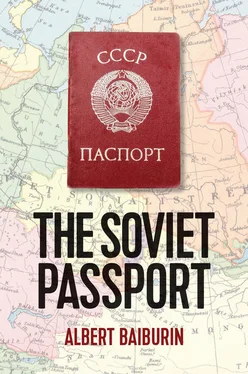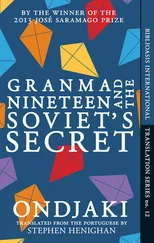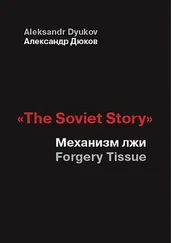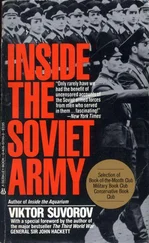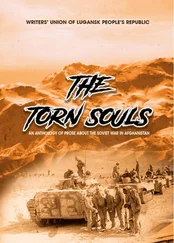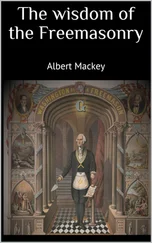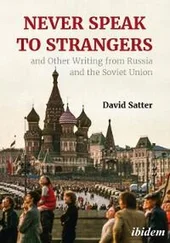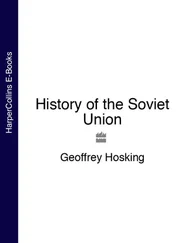1 ...7 8 9 11 12 13 ...27 In their work, Beyond ‘Identity’ , Rogers Brubaker and Frederick Cooper characterize the state as one of the most important agents for identification and categorization, having in mind ‘the formalized, codified, objectified systems of categorization developed by powerful, authoritative institutions’. 34This includes identification documents, which classify people by social origin, ethnicity, sex, age and other factors. Of course, it is not only state bodies that use such categories for classification. Any organization (school, prison, production facility) has its own categories; but it is only the state that devotes the resources to ensuring that its system of classification is the same in all of its organizational structures. 35
When bureaucracy takes over the life of society one result is the creation of a person’s documented double. Rom Harré came up with the concept of ‘file-selves’, a type of dossier containing documents about a particular person. 36This dossier could contain a whole variety of documents: a personal history, references, different types of certificates and so on. Each of them carries specific information about some or other aspect of the person; thus one could say that the real ‘I’ is made up of a multitude of documented variants. Sheila Fitzpatrick maintains that, ‘The making of files was a basic project of the Soviet state from its early years.’ 37In the Russian translation of her book, Tear Off the Masks! , the concept of ‘fileselves’ is translated as ‘the documented “I”’, which can be found in the personal dossiers of various organizations and institutions, in files containing kompromat , and in internal passports. In contrast to Harré, who believed that the documented ‘I’ usually did not depend on the person themselves, Fitzpatrick highlights the way in which the Soviet dossier was brought together: its contents could be altered not only by those who compiled the dossier or those who held it, but also by the person whose dossier it was. They could do this by such methods as giving false information about themselves, changing their personal history, or altering the details about themselves in their passport. Furthermore, they had the possibility to challenge the information contained in official documents. The documented ‘I’ did this with dynamic effect, by submitting a wide variety of alterations. The Soviet passport could probably be seen as a special example of the documented ‘I’, with which every owner (or reader) could associate.
Examining a document such as a passport involves looking at questions of the individual person, and at the way in which the authorities tried to create the image of the Soviet person by allocating what the state considered to be essential characteristics. A significant amount of research has already been conducted in this conceptual field. For a long time the prevailing view was that in the Soviet era the personality was simply suppressed; but now fresh approaches to the question have suggested there were positive effects from the ‘cultural construction’ of the Soviet person. Jochen Hellbeck considers the cultural policy of the Soviet authorities as ‘a project to transform imperfect human beings into universal socialized subjects’. 38Using as his basic source the diaries of Communist Party members who actively participated in collectivization, he insists that revolutionary practices had a productive effect on the consciousness and feelings of the Soviet people. 39Hellbeck’s position, which goes against the accepted one-sided view of the personality in a totalitarian society, is vital to future investigation in this area. It is worth pointing out that this concept maintains that the person is not simply someone mechanically carrying out ideological orders, but a subject who is capable of considering and altering them, and adapting them to his own wishes.
When considering the issue of how the Soviet personality was formed, Oleg Kharkhordin’s thoughts on subjective and objective practices have real significance. 40Through these we can see the transformation of the ‘uniform, faceless mass’ into individuals. 41So we can see that the story of the Soviet passport is of interest to those who have looked at it both subjectively and objectively. The passport ‘stamped’ people in one mould; yet at the same time people discovered something new in themselves, adopting details contained in the passport which they had never considered before. What’s more, the passport automatically gave a public face to personal details. From this point of view, it can be seen as a mechanism for turning what was private into something public. 42Thus, the well-known way the Soviet authorities tried to widen the public sphere as much as possible (especially during Stalin’s time) 43impinges upon passport policy, too.
Finally, in order to study how Soviet people reacted to the rules of identification that were imposed upon them, it is undoubtedly useful to take into account the ideas of Michel de Certeau about ‘the tactics of the weak’, which, ‘bring countless petty changes … to the law, reflecting their own interests and rules’. 44In Soviet practices of interaction with officialdom, this tactic is especially typical.
In recent times interest has grown noticeably in the study of documents, such as the passport and others, which confirm identity. Evidence of this is the international project, Documenting Individual Identity: Historical and Comparative Perspectives since 1500 (IdentiNet) led by Jane Caplan and Edward Higgs, in which identity documents are the principal items of study. Under the auspices of this project a series of research papers has been published dedicated to the history and functioning of identity documents in a number of cultural traditions. 45Amongst these, of particular interest is the picture John Torpey presents of the evolution of the passport, which looks closely at the efforts of the authorities to establish control over movement since the time of the French Revolution. Certainly, there were ups and downs in this process. There was a weakening of control in the second half of the nineteenth century, brought about by the construction of the railways and a sharp rise in mobility; but this was followed by a period when tighter control was imposed once again. 46
These processes did not pass Russia by; but, naturally, there they had their own specific nature. The history of the Russian passport has been examined mainly in the context of the development of tax legislation. 47It is only comparatively recently that works have appeared devoted specifically to the study of the passport and the passport system. One of these is the research into the history of the Russian passport carried out by Mervyn Matthews. 48The main emphasis in Matthews’ work is on the authorities’ efforts to control movement, beginning with the appearance of the passport in Russia and up to the introduction of the Soviet passport. As Matthews showed, the development of the passport system went hand-in-hand with the process of the stratification of Russian society, and somehow the issuing of passports strengthened and reflected this process. Before the introduction of passports in the Soviet period, the registration of the population and the supervision of this system was done by measures such as compulsory military registration, labour conscription and the decree on registering your place of abode, which, in Matthews’ opinion, inevitably led to the introduction of the passport system.
It is also worth noting the authoritative study by Valentina Chernukha of the development of the Russian passport over the course of two centuries, from 1719 to 1917. 49This was based on archival and previously published sources, and was published in 2007. As well as examining the historical evolution of the passport system, particular attention is paid in Chernukha’s book to the role of the passport as a means of police control, which makes it an invaluable manual for future examination of this subject.
Читать дальше
